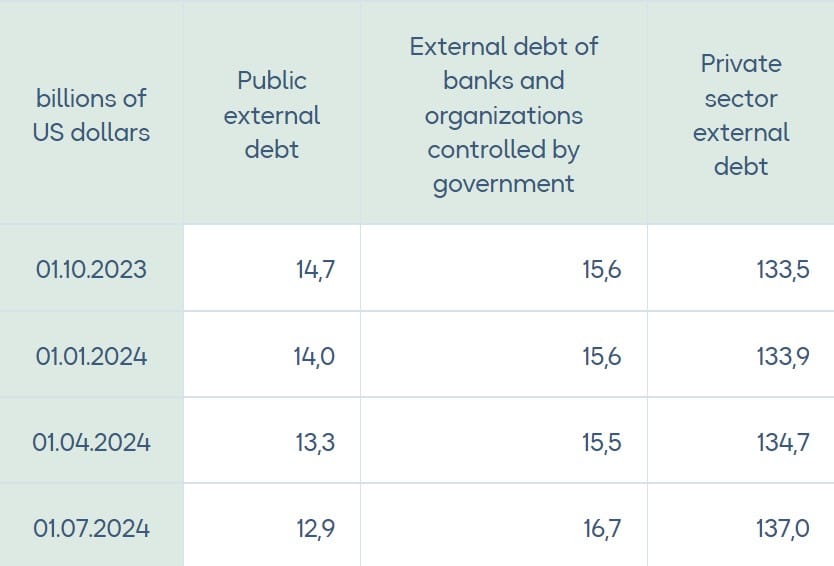Kazakhstan’s growing foreign debt: causes and implications

As of July 1, 2024, Kazakhstan’s foreign debt totaled $166.5 billion, marking a $3 billion (1.85%) rise during the second quarter, according to the National Bank of Kazakhstan.
Of the total debt, $29.5 billion is public sector debt, while $136.9 billion is owed by the private sector. The public sector debt includes:
- $10.8 billion owed by public administration bodies,
- $2 billion owed by the National Bank,
- $16.6 billion owed by government-controlled institutions.

Private sector foreign debt includes $43.3 billion from banks and other industries, along with $93.6 billion in intercompany debt. Intercompany debt refers to the obligations of Kazakhstani companies to foreign investors ($79 billion), liabilities of Kazakhstani investors to foreign companies ($10.2 billion) and debts Kazakhstani companies owe to their foreign subsidiaries ($4.3 billion).
Long-term debt accounts for $145.7 billion, while short-term debt stands at $20.8 billion. As a result, Kazakhstan’s external debt is 60.5% of GDP when intercompany debt is included and 26.5% of GDP without it.
Last month, Azamat Amrin, vice minister of national economy, revealed that as of Jan. 1, 2024, Kazakhstan’s public debt was approximately $56 billion or 22.7% of GDP, remaining within acceptable standards. The draft state budget for 2025 projects public debt to reach $74 billion or 23% of GDP.

